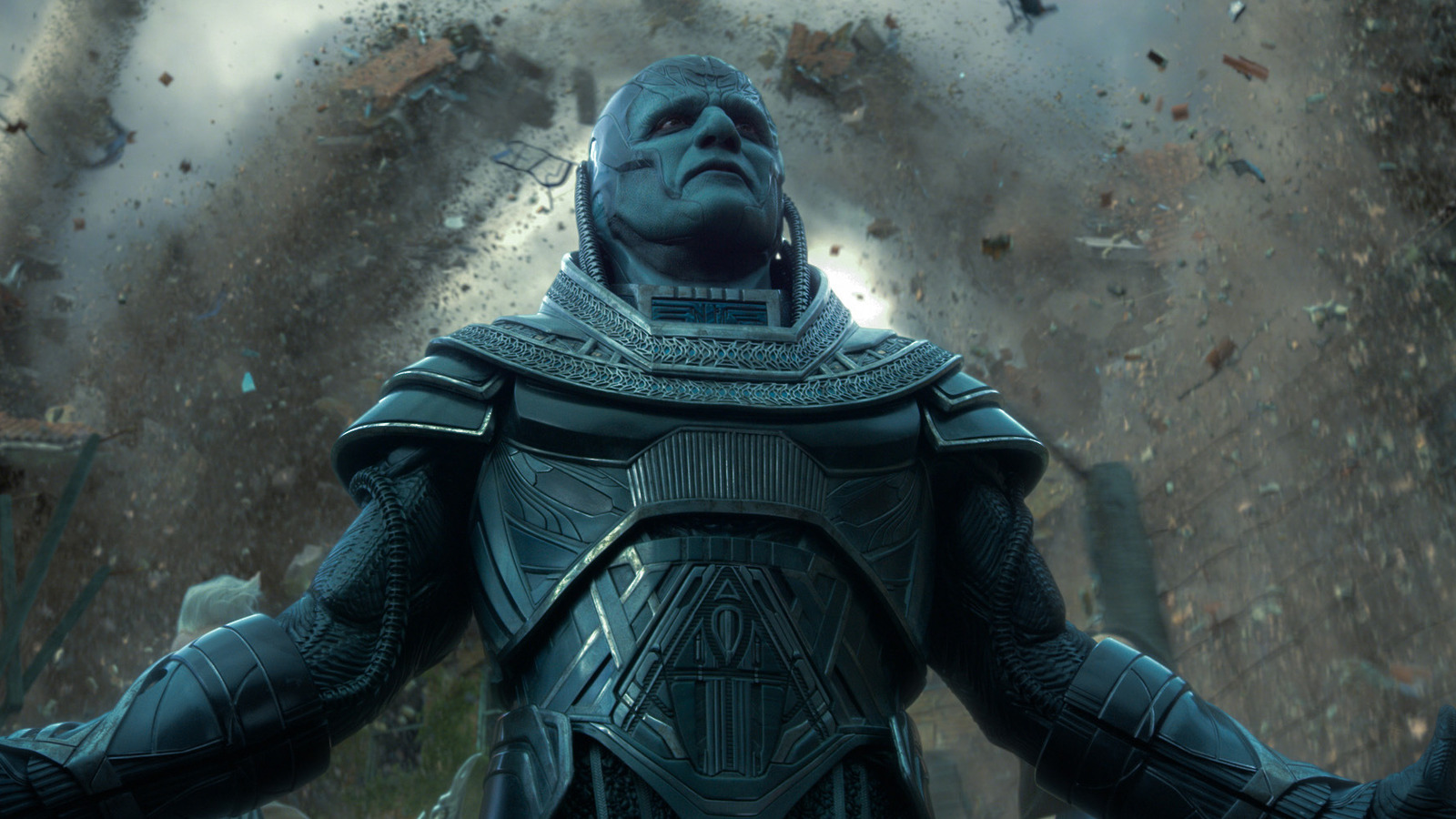
Essential for a fantastic superhero film is a memorable villain, and many remarkable comic book adaptations on the silver screen showcase adversaries who are just as captivating as the heroes themselves. These villains, based on classic comics, frequently generate excitement not only from studio promotions but also from fans eager to see their favorite nemeses accurately portrayed. The more formidable the foe, the greater the anticipation.
Although iconic characters such as the Joker have had successful adaptations multiple times, and powerhouse villains like Thanos and Magneto have become legendary in comic book history, there are many others who fell short on the big screen. Unfortunately, Marvel has had its fair share of missteps when it comes to creating compelling villains. They often build up anticipation for a formidable new adversary to challenge heroes such as the Avengers or X-Men, but unfortunately, these promises frequently go unfulfilled due to poor execution. Here we’ve gathered some of the most overhyped Marvel villains who ultimately disappointed audiences.
Taskmaster
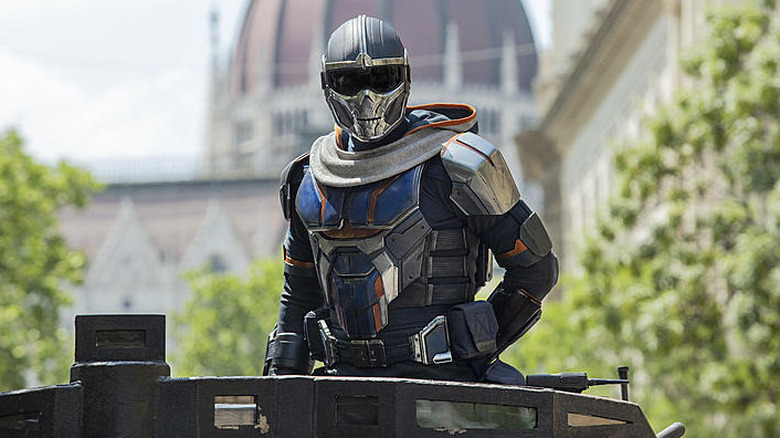
The character known as Taskmaster is a formidable foe of the Avengers, renowned for his ability to copy the fighting styles of any adversary he encounters. This versatility makes him a fearsome opponent, as he can wield a shield like Captain America, fire arrows like Hawkeye, swing through the air like Spider-Man, fight hand-to-hand like Daredevil, and possess marksman skills comparable to Bullseye. Given his formidable combat skills and lack of superpowers, it’s no surprise that fans have long awaited his appearance on screen. This anticipation was finally fulfilled when Taskmaster was revealed as a significant antagonist in the film “Black Widow,” marking his long-overdue introduction after more than 15 years.
In the movie, Olga Kurulenko portrayed the gender-swapped version of Taskmaster, who mirrored the original character’s abilities remarkably well. She demonstrated an impressive skill to mimic moves from characters like Black Widow, Spider-Man, Black Panther, and Captain America. Her costume was a faithful adaptation, and she was equipped with a shield, bow, and sword, just as her comic book counterpart had. However, the character’s role in the story was minimal, functioning more as a secondary villain to the main antagonist Dreykov (Ray Winstone), barely speaking during her limited screen time. Taskmaster is set to reappear in “Thunderbolts,” and we eagerly anticipate that her character will be given a more substantial role in the storyline.
The Mandarin (2013)
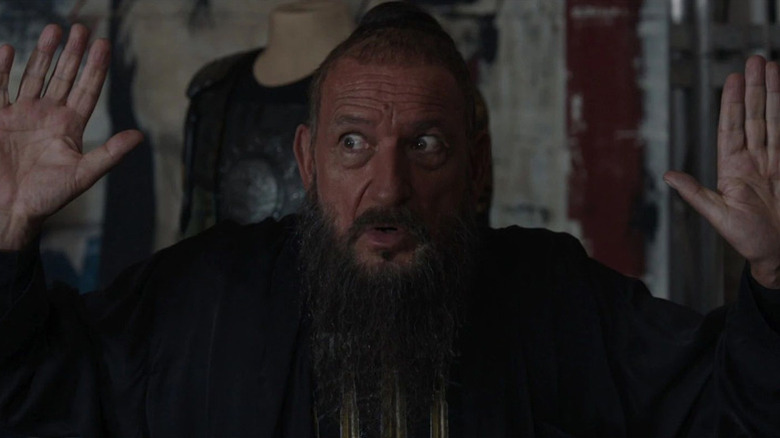
2022 marked the year when Marvel enthusiasts were introduced to the authentic Mandarin, the renowned antagonist of Iron Man from the comics, who has consistently posed a threat to Iron Man. Portrayed by Tony Leung, the Mandarin was featured in “Shang-Chi and the Legend of the Ten Rings,” though it’s important to note that this was only possible due to Marvel Studios’ previous attempt with the character in “Iron Man 3” in 2013. In that film, Marvel made an effort to steer clear of the racial stereotypes associated with the Mandarin from the comics, but unfortunately, their attempts were perceived as confusing by many viewers instead.
Rather than being the wielders of 10 mystical rings that grant him supernatural, almost god-like powers, the Mandarin in “Iron Man 3” is portrayed as the leader of a Middle Eastern terrorist organization. Played by Ben Kingsley, it seemed like an interesting take on the character — even if it offered up its own racial stereotypes of Arab terrorists – but it was all undermined by one of the worst twists in the Marvel Cinematic Universe.
In a surprising twist, it turns out that Kingsley’s portrayal of The Mandarin is essentially a mere decoy: An English performer named Trevor Slattery was employed by Aldrich Killian (played by Guy Pearce) to serve as the public figurehead for his criminal organization. Despite initial criticism, Marvel continues to feature Slattery prominently, with Kingsley set to have a significant role in the upcoming “Wonder Man” series on Disney+.
Adam Warlock
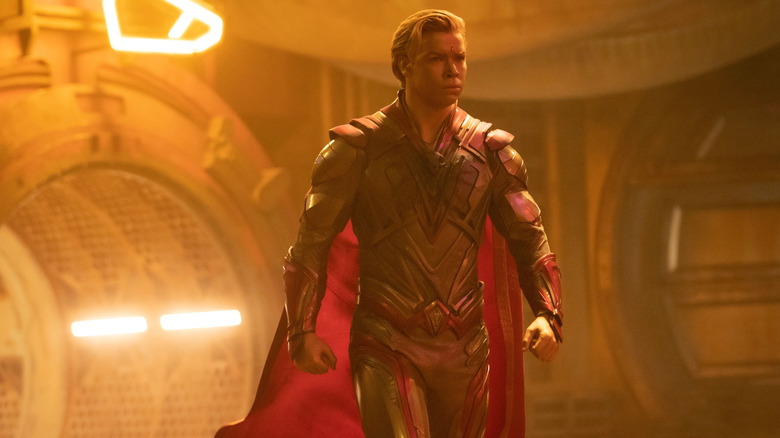
Adam Warlock is a significant figure in the cosmic realm of the Marvel Universe. Originally introduced as the champion from an alternate Earth, Warlock has become pivotal in numerous “Infinity” narratives. Despite his absence when “The Infinity Gauntlet” was brought to life on the big screen, hints of his arrival were subtly planted at the end of “Guardians of the Galaxy Vol. 2,” generating immense excitement among fans for the upcoming sequel.
Regrettably, a contentious scandal in the Marvel Cinematic Universe (MCU) caused a prolonged delay for director James Gunn’s “Guardians of the Galaxy Vol. 3,” which unexpectedly heightened fan anticipation for Adam Warlock’s premiere, featuring actor Will Poulter in the role. On-screen, however, the cosmic hero seemed to differ significantly from his comic book counterpart, failing to meet the expectations of many fans.
As a gamer, I was anticipating a brooding, distant, and ominous cosmic hero, but what I got instead was a ridiculously powerful, clumsy jester – that’s the reinterpretation of Gunn’s take on the character as an artificially created being with a child-like mind. It fits perfectly for the movie, yet as an adaptation of the original character, it falls significantly short.
Baron Mordo
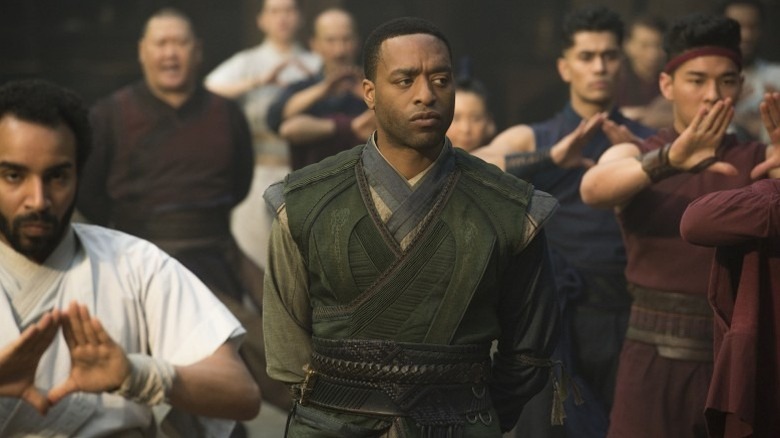
In the comics, Stephen Strange primarily encounters a handful of key villains, and two of these were prominently featured in the 2016 movie “Doctor Strange.” Although Dormammu was reserved for the climax, Baron Mordo (played by Chiwetel Ejiofor) is initially presented as a supporting character rather than an adversary. Interestingly, he starts off as a friend instead of a foe in the film. However, this friendship dissolves in the post-credits scene, where it’s revealed that Mordo, after the rise of Doctor Strange, intends to eliminate magic users. This sets up Mordo for a significant role as the antagonist in the sequel.
2021 brings us “Doctor Strange in the Multiverse of Madness,” where Karl Mordo, as we know him, is conspicuously absent from the plot. This omission adds another unresolved cliffhanger to the pile from previous movies. To clarify, Benedict Cumberbatch does reprise his role as an alternate Mordo, but not the original character fans have come to expect. Despite the quality of Ejiofor’s performance and the part itself, it feels like a letdown to establish a storyline for one of Marvel’s iconic magic villains, only to neglect him in what could have been his own tale.
Batroc the Leaper
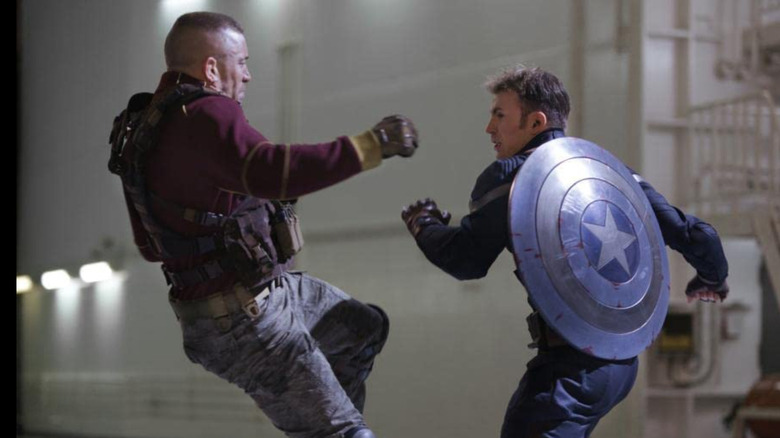
Batroc the Leaper is not typically considered one of Marvel’s most significant or memorable villains, unless you’re deeply immersed in Captain America comics. In his initial appearances, he was more of a humorous character, mainly known for his leaping abilities and little else. However, when Georges St-Pierre, a real-life mixed martial artist and UFC champion, portrayed him in 2014’s “Captain America: The Winter Soldier,” the character gained some notoriety within the Marvel Cinematic Universe (MCU).
In a less than ideal turn of events, fans were greatly anticipating the portrayal of St-Pierre, given his dual heritage as French and an expert in martial arts, and not to mention, a namesake of the movie’s villain. However, when the film was released, the character was written out of the storyline quickly, leaving fans disheartened. Even his solitary fight scene fell flat, with Captain America effortlessly defeating the French mercenary in just a few swift moves. It’s a well-executed fight sequence, but it felt like watching a highly anticipated boxing match end in a first-round knockout. Fortunately, St-Pierre was given a second opportunity in 2021’s “The Falcon and the Winter Soldier,” yet again, the character was underutilized.
M.O.D.O.K.
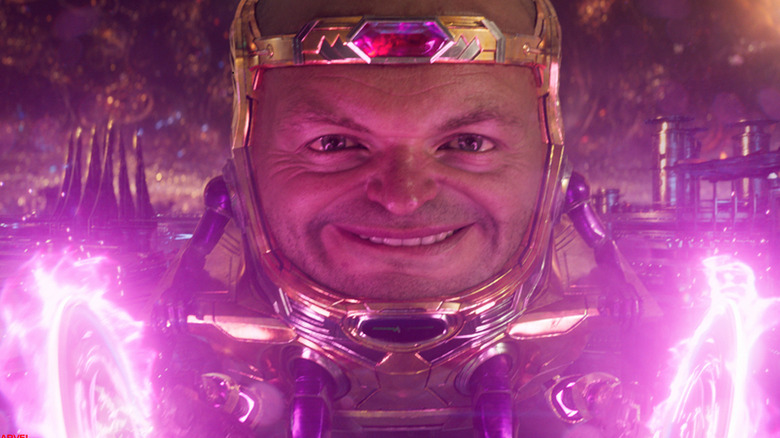
In a different phrasing, M.O.D.O.K., another unconventional villain from the Iron Man comics, stands out due to his unique appearance as a large floating head with minimal limbs. While he fits perfectly in his comedic stop-motion animated series, he seems an unlikely character for the MCU. However, the introduction of the Quantum Realm in “Ant-Man and the Wasp: Quantumania” has opened up room for such strange characters within the Marvel Cinematic Universe.
In the Marvel Cinematic Universe (MCU), M.O.D.O.K. was portrayed differently than in the comics: Rather than being a brilliant scientist working for A.I.M., he is Darren Cross, the antagonist Yellowjacket from the first “Ant-Man” film. After being altered in the Quantum Realm, his physical form appears in the series, but unlike the tactician who has defeated some of Marvel’s mightiest heroes in the comics, he is merely a joke that falls flat. To add insult to injury, the visual effects used to bring him to life are subpar at best and resemble those from a low-budget ’90s children’s TV show at worst. It leaves one to question if it would have been better for this character to be left out of the series entirely. Perhaps there is hope for a more successful introduction in the future, but for now, we can only wonder.
Bullseye
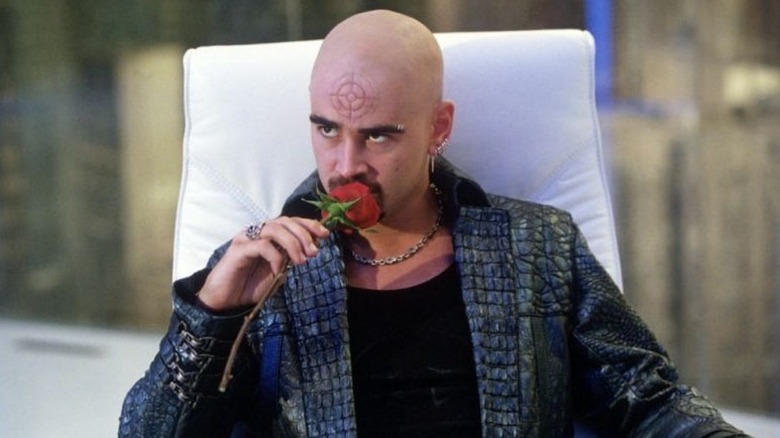
Daredevil is Marvel’s leading hero who operates primarily on the streets, but interestingly, he doesn’t have a large number of widely recognized villains. It was an intriguing move to destroy three of Daredevil’s main antagonists in his cinematic debut, as Kingpin (Michael Clarke Duncan), Elektra (Jennifer Garner), and Bullseye (Colin Farrell) all played significant roles in the 2003 film.
While Elektra may have her flaws, it’s Bullseye who seems to be the less fortunate one. Played exceptionally well by Farrell, Bullseye is given a fresh take as an Irish punk, sporting a black leather jacket reminiscent of “The Matrix” and a forehead scar in the shape of a bullseye. In stark contrast, Daredevil sticks closely to his comic-book costume, a bright red leather ensemble. However, Bullseye appears as if he just stepped out of a rough brawl in Dublin’s back alleys, which makes his portrayal seem somewhat comical, given the wide array of choices for a character with exceptional marksmanship skills.
In the third season of Netflix’s “Daredevil”, which aired a decade after its initial run, Bullseye was recast and played by Wilson Bethel. However, his portrayal fell short of expectations. Instead of highlighting Bullseye’s strengths, he was quickly depicted as going insane and donning Daredevil’s costume. It’s worth mentioning that Bullseye has yet to make an appearance in his traditional attire on screen; instead, he is seen wearing Daredevil’s.
Dark Phoenix
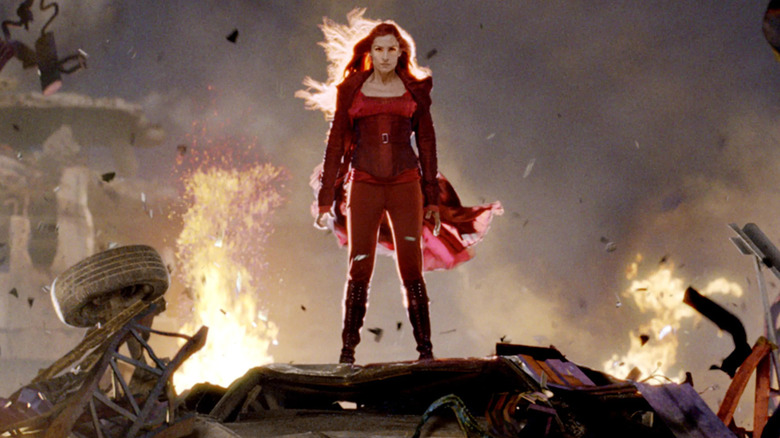
In a different interpretation, Marvel arguably fell short with Bullseye, but not to the extent that Fox’s adaptation of Dark Phoenix did in the X-Men series. The Dark Phoenix, a corrupted version of the hero Jean Grey, is born from a cosmic force, primarily set outside Earth. She’s one of the most powerful X-Men villains and is famously associated with a classic comic storyline. However, the portrayal in “X-Men: The Last Stand” diluted the narrative, presenting Dark Phoenix as a brainwashed Jean Grey with enhanced psychic abilities, essentially reducing her to Magneto’s sidekick rather than the formidable adversary she was intended to be.
In a less satisfying portrayal, Famke Janssen’s characterization of Dark Phoenix in 2006 seemed almost unrecognizable; there was no reference to anything cosmic, which reflected Fox Studios’ preference for grounded X-Men stories in the 2000s. However, by 2019, space-themed superhero films like “Guardians of the Galaxy” were immensely popular, so it was perplexing that the second attempt at “Dark Phoenix,” true to its title, continued to miss the mark. Instead of showcasing Jean (Sophie Turner) battling alien forces in a cosmic setting, the story primarily unfolded on Earth, merely suggesting her new powers’ interstellar origins rather than demonstrating them.
Speaking candidly, it appears that among the X-Men film series, “X-Men: The Last Stand” and “Dark Phoenix” stand out as the least impressive installments compared to both iterations of Daredevil within the realm of superhero narratives.
The Hand
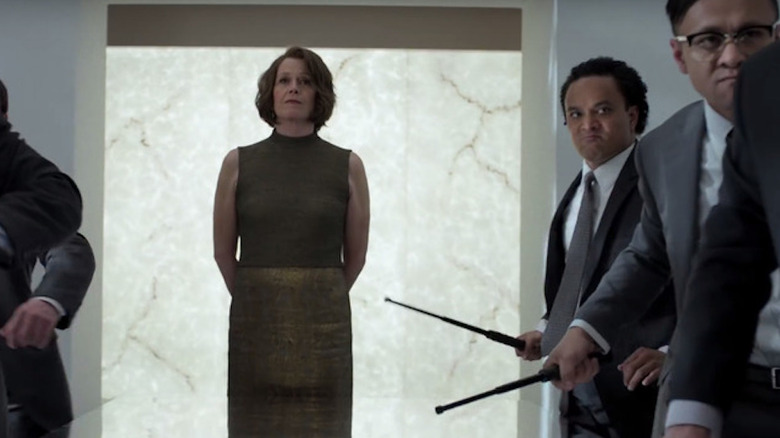
Regarding Marvel’s Netflix series – “Daredevil,” “Jessica Jones,” “Luke Cage,” and “Iron Fist” – there are several villains that received a lot of hype. However, none disappointed as much as the secret assassins called The Hand. In the comics, The Hand are considered Earth-616’s top ninja group, featuring in “Daredevil” comics and playing significant roles in various Wolverine stories as well.
Following Netflix’s release of “The Defenders,” this team-up of Marvel’s TV characters – Daredevil, Jessica Jones, Luke Cage, and Iron Fist – faced off against The Hand, who had sinister plans for New York City. Unfortunately, The Hand in this series is portrayed as a group of largely inept thugs, resembling the bumbling Foot Clan from “Teenage Mutant Ninja Turtles” more than the skilled and battle-hardened ninjas from the comics. Their leader, Alexandra Reid (played by Sigourney Weaver), is not particularly intimidating either, as her grand scheme involves collapsing the city upon the remains of an ancient dragon buried beneath Manhattan – a plan that seems rather questionable.
Apocalypse
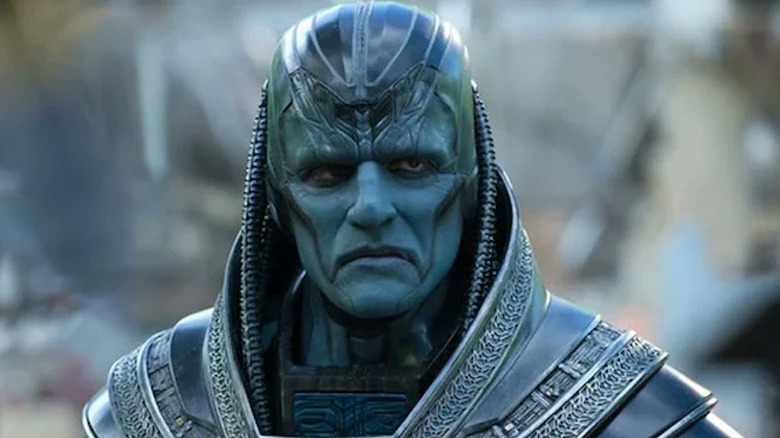
Fans of Fox’s X-Men films have consistently been disappointed by the series’ focus on Magneto as the main antagonist, with other iconic villains like Mr. Sinister and Juggernaut being underutilized or sidelined. Fan favorites such as Mr. Sinister were longing for more screen time, while characters like Juggernaut were often used only for brief appearances. After a ten-year absence from the series, Apocalypse was introduced in 2016’s X-Men: Apocalypse, but many fans reacted negatively to his arrival even before the movie hit theaters.
In the movie, Oscar Isaac portrays the character, but it’s not the actor that viewers blame for his underwhelming performance as a villain. This character, like numerous other anticlimactic villains, was incredibly formidable in the comics, striking fear akin to Thanos or Kang the Conqueror. However, on screen, he appears remarkably less menacing, and Isaac’s actual height of 5 feet 8 inches isn’t often enhanced to make him appear intimidating. Additionally, the character’s makeup sometimes resembles a more glamorous version of a “Power Rangers” antagonist, a detail that many fans picked up on – and criticized or made fun of – when the initial images were released.
Kang the Conqueror
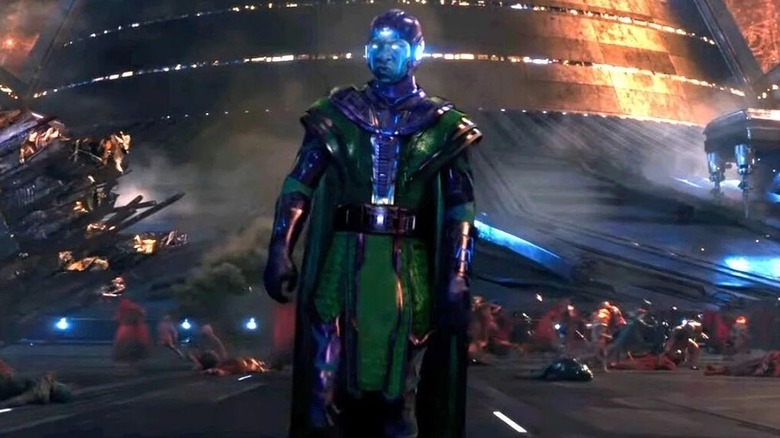
After “Avengers: Endgame,” fans were eagerly awaiting who would be the next major antagonist in the Marvel Cinematic Universe (MCU), and Kang was a popular guess among many enthusiasts. In the comics, Kang, a time-traveler, has been causing trouble for the Avengers since the 1960s. Given his numerous versions throughout Marvel history, Kang appeared to be an ideal candidate for an MCU storyline that could lead to a grand two-part Avengers epic.
Fans were thrilled when up-and-coming actor Jonathan Majors was chosen to play Kang, but his initial portrayal fell short of their expectations. In the first season of “Loki,” he made a peculiar debut as He Who Remains, while it wasn’t until “Ant-Man and the Wasp: Quantumania” that his full transformation into the fearsome Kang the Conqueror was revealed. However, in this film, Kang appeared much weaker than the formidable multiverse ruler he is in the comics, often overshadowed by the small but powerful heroes, Ant-Man and Wasp.
It could be argued that Major’s dismissal due to his legal troubles might have turned out to be a fortunate turn of events for the studio, as audience reactions to Kang were rather lackluster. In essence, the off-screen problems served as a catalyst, compelling the studio to significantly reduce the presence of the villain in the film.
Deadpool (2009)
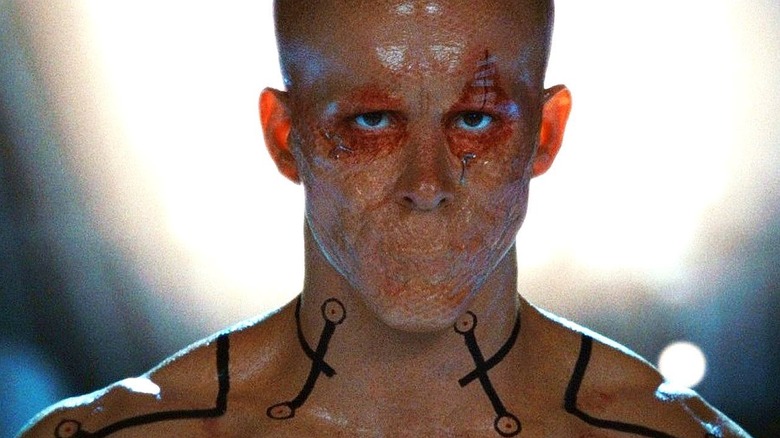
As a dedicated gamer and die-hard fan of Deadpool, I’d say it’s hard to dispute that Ryan Reynolds’ portrayal in the three Deadpool movies since 2016 has been remarkably true to the comic book character. His costume is like a faithful translation from the pages, and Reynolds nails the essence of Joe Kelly’s beloved version of the Merc with a Mouth. It’s too bad that his debut back in “X-Men Origins: Wolverine” didn’t quite hit the mark, though.
In one scenario, an actor named Reynolds found himself in a role he wasn’t enthusiastic about, agreeing to play Wade Wilson against his wishes due to dissatisfaction with the character’s representation in the script. And indeed, he made a correct assumption: Fans were enraged when everything they adored about the character was misrepresented. He lacked the iconic costume, sported giant blades on his forearms, and emitted lasers from his eyes, all while having his mouth sewn shut – stripping away the witty banter that epitomizes the character. Fans had eagerly anticipated seeing Deadpool on screen for years, but the initial attempt was nothing short of a catastrophe.
Galactus

Frequently, over-the-top characters from comic book movies are given more realistic portrayals. When Tim Story aimed to bring “The Fantastic Four” to life as a major franchise, some aspects had to be adjusted. For instance, Dr. Doom was given a stylish trench coat instead of a flowing cape. However, when your antagonist is an enormous purple-armored alien who gobbles planets for breakfast and has a giant “G” on his chest, what do you do? The simple solution, it seems, was to transform him into a cloud. Frankly, is there any need for further clarification?
To devoted fans, it was extremely frustrating that Galactus, the Fantastic Four’s formidable adversary, didn’t stay true to his comic book characterization in the 2007 sequel, “Fantastic Four: Rise of the Silver Surfer.” Since many comic enthusiasts had been eagerly anticipating the appearance of this colossal purple cosmic entity for decades, it was disheartening to see him portrayed as a giant cloud instead. Frankly, it’s almost too unbelievable to accept.
Venom (2007)
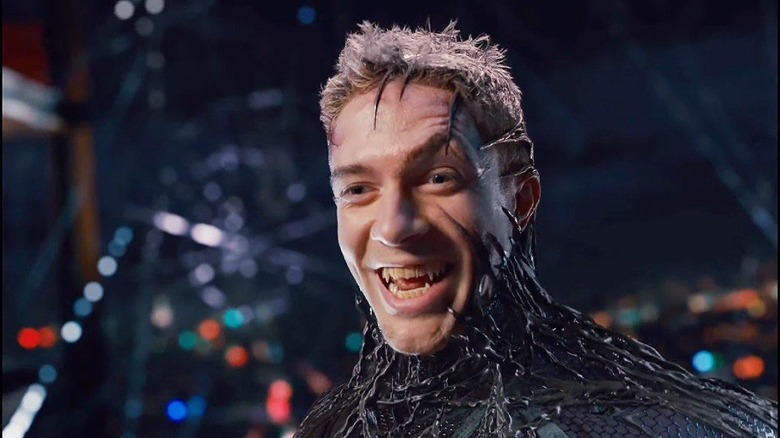
In a fresh and understandable manner, I’d rephrase it as follows: Sam Raimi’s initial two “Spider-Man” movies are often held up as benchmarks for comic book adaptations, raising the bar for their quality. They were both commercial successes and received critical acclaim, with Green Goblin and Dr. Octopus among Spidey’s most iconic adversaries making appearances. However, it was in the third film that arguably the most beloved Spider-Man villain was introduced: Venom, an alien symbiote. Unfortunately, this character deviated significantly from his comic book counterpart, primarily due to casting choices.
In the comic books, the human identity of Venom is Eddie Brock, a large and rough-talking bodybuilder and journalist who catches the attention of the alien symbiote due to his imposing physique and aggressive temperament. Who would be the ideal actor to portray this towering, violent character? One might assume that a muscular and intimidating actor like Topher Grace, at 5 feet 11 inches tall and relatively slender, wouldn’t fit the bill, as he had just finished playing a teenager on “That ’70s Show.” However, Grace was not cast for his physical prowess but rather to embody a whiny, immature manchild who lacked the toughness of Brock from the comics. Instead, the character written for him was the complete opposite of the intimidating figure that Eddie Brock is known to be in the comics.
Read More
- 10 Most Anticipated Anime of 2025
- Gold Rate Forecast
- USD MXN PREDICTION
- Pi Network (PI) Price Prediction for 2025
- Silver Rate Forecast
- USD CNY PREDICTION
- Brent Oil Forecast
- How to Watch 2025 NBA Draft Live Online Without Cable
- USD JPY PREDICTION
- Grimguard Tactics tier list – Ranking the main classes
2025-02-20 15:32